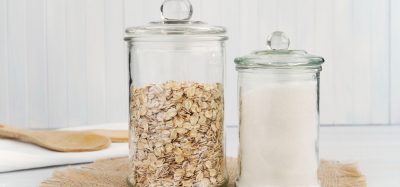Using limonene to enhance low-fat chocolate
- Like
- Digg
- Del
- Tumblr
- VKontakte
- Buffer
- Love This
- Odnoklassniki
- Meneame
- Blogger
- Amazon
- Yahoo Mail
- Gmail
- AOL
- Newsvine
- HackerNews
- Evernote
- MySpace
- Mail.ru
- Viadeo
- Line
- Comments
- Yummly
- SMS
- Viber
- Telegram
- Subscribe
- Skype
- Facebook Messenger
- Kakao
- LiveJournal
- Yammer
- Edgar
- Fintel
- Mix
- Instapaper
- Copy Link
Posted: 3 May 2016 | Victoria White, Digital Content Producer | No comments yet
Researchers at KU Leuven have shed light on how adding limonene could improve the texture in lower-fat versions of chocolate and its ability to melt…


Reducing the fat content in chocolate can affect the sensory perception of the confection, making it harder and less likely to melt in your mouth. That’s why scientists are investigating additives that could reinstate chocolate’s desirable properties in lower-fat variants.


Now, researchers at KU Leuven have shed light on how adding limonene could improve the texture in lower-fat versions of chocolate and the ability to melt.
Flavour and sweetness make strong contributions to the pleasant experience of eating chocolate, but so do look and feel. Reducing the fat in chocolate, however, often ruins its texture and viscosity. Previous research has shown that adding limonene – a compound found in lemons and oranges – results in a smoother, softer chocolate that melts more easily than typical reduced-fat chocolates. Annelien Rigolle and colleagues at KU Leuven in Belgium sought to investigate exactly how the compound impacts chocolate production. They focused on one part of this process: the crystallisation of one of its main ingredients, cocoa butter, which undergoes several important transformations at different times and temperatures.
Amount of limonene crucial
The researchers examined cocoa butter crystallisation at 63 °F and 68 °F using differential scanning calorimetry and X-ray diffraction to examine cocoa butter profiles when limonene was added. Surprisingly, they found that adding the compound accelerated cocoa butter crystallisation at 63 °F, but inhibited cocoa butter crystallisation at 68 °F. Varied concentrations of limonene also affected the crystallisation steps of the cocoa butter differently, so they could ultimately affect the texture of chocolate. The study suggests that carefully choosing the amount of limonene and the temperature at which chocolate is processed could lead to a smoother, more luxurious reduced-fat chocolate.







